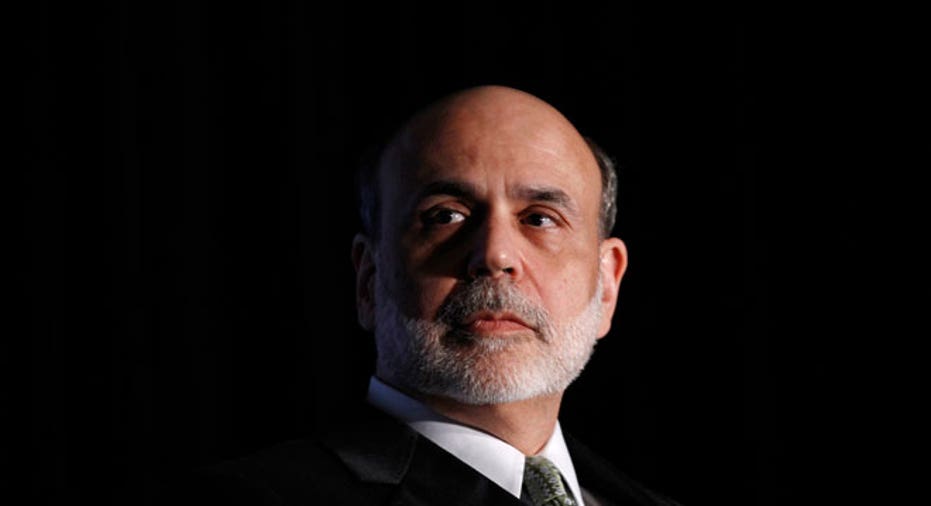Skeptics Question Fed Transparency Policies

The Federal Reserve Board’s head-first plunge into the world of transparency certainly seems well-intentioned. But everyone knows what the road to hell is paved with.
Fed Chairman Ben Bernanke has made increased transparency a priority of his tenure and it will certainly color his legacy once he leaves the Fed and returns, presumably, to academia.
The question is whether that legacy will be positive or negative.
It’s too soon to tell, but already Bernanke’s new open-door policy has been met with skepticism by some who believe too much information from Fed policy makers could be harmful to the economy.
“Self-fulfilling prophesies are the problem with disclosure,” said Jay Ritter, a finance professor at the University of Florida.
If the Fed releases interest rate forecasts from 17 of its policy makers, as it did Wednesday for the first time in its history, and those forecasts predict a long, difficult slog for the U.S. economy, it’s likely that consumers will respond to those projections by tightening their belts.
The last thing U.S. businesses need right now is for consumers, whose spending accounts for 70% of the domestic economy, to become any more skittish than they already are.
Ritter said gloomy Fed forecasts and the potential they hold for negatively impacting consumer sentiment could threaten the already-fragile economic recovery.
And gloomy they were. The Fed announced it will keep a key interest rate, the federal funds rate, or the short-term rate banks charge each other, in the exceptionally low range of 0-0.25% until late 2014.
That historically low rate was set three years ago at the height of the financial crisis in an effort to stimulate lending and promote the flow of money into financial markets. Clearly, a majority of Fed policy makers believes economic conditions in the U.S. are going to remain difficult for at least three more years.
The reason given for releasing a rate-change timetable is to provide markets with clarity. But when that policy was initiated in August the timetable for raising rates was set at mid-2013. Now that date has been pushed back by another year and a half, leaving some to question what’s changed in the past six months.
The change of heart has some wondering what the Fed knows that others may not.
“In hindsight the Fed won’t be any more accurate than anyone else.”
Also fueling skepticism toward Bernanke’s transparency policies was the actual rate projections released by the 17 individual policy makers – the forecasts ran all over the map in terms of their views on the health of the economy and a timetable for a strong recovery.
Three policy makers, presumably inflation hawks who believe the current low rates will eventually drive prices higher, believe the Fed should raise rates in 2012. Three others said rates should be raised in 2013. Five policy makers said rates should rise in 2014. Of the remaining six policy makers, four said rates shouldn’t be raised until 2015 and two more until way out in 2016.
Not exactly a united front, nor a stirring vote of confidence for a speedy recovery.
Greg McBride, senior financial analyst at Bankrate.com, said the Fed’s increased transparency will reveal two things: the existing divisions within the Fed, and Fed eventually policy makers’ “human frailties” as forecasters.
“In hindsight the Fed won’t be any more accurate than anyone else,” he said.
No one should really be surprised by this. Over the past decade, even as the central bank was operating under the secretive cloak of former Fed Chief Alan Greenspan, the occasional forecasts that did make their way into the public realm were often way off the mark.
In 2006, for instance, as cracks in the housing bubble started to emerge, Greenspan was quoted as saying, “There is a good chance of coming out of this in good shape, but average housing prices are likely to be down this year relative to 2005. I don’t know, but I think the worst of this may well be over.”
Turns out he didn’t know.
Also from 2006 and taken from a staff document prepared by members of the Federal Open Market Committee, which sets most Fed policy: “We are not projecting large declines nationwide in house prices.”
Last but not least a quote from Bernanke following a speech in early 2008: “The Federal Reserve is not currently forecasting a recession.”
Bernanke himself made certain on Wednesday to let everyone know that the projections offered by Fed policy makers were not written in stone, that they should be used as guidance, preferably as a tool to help investors and businesses plan for the future with a greater sense of clarity.
Most analysts agree that Bernanke’s heart is in the right place, that he wants to do the right thing. But since no good deed ever goes unpunished, the shift to transparency could backfire by further cutting into the Fed’s credibility if the projections turn out to be way off base.
Credit Suisse analysts predicted as much a few weeks ago in a note to clients: “Eventually, the Fed is bound to discover it cannot live up to the policy trajectory communicated to the market; when this happens the Fed will have enhanced its transparency at the expense of its credibility. And between those two assets, credibility is by far the more important.”



















